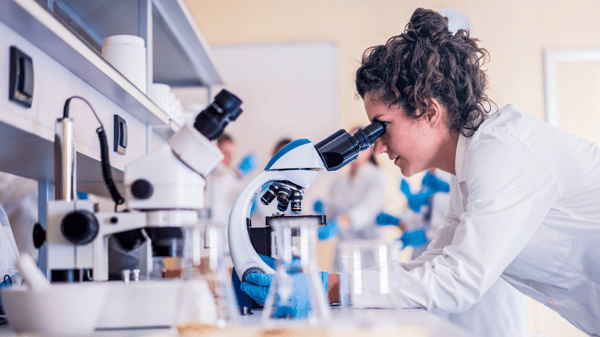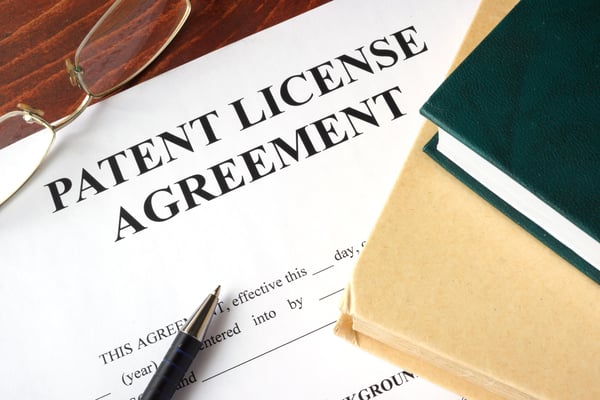Learn the basics of patent ownership, claims, and how patents can be used by multiple parties.
A patent is a government-granted right that gives you the sole ability to make, use, sell, or import an invention. The definition of invention is a process, machine, manufacture, or composition of matter. In other words, a patent is not only valid for a physical machine but many other systems as well. In the United States, patents have a term limit, 20 years from the earliest filing date. Each country has their own system for filing patents and, therefore, each patent application is only valid in the country in which it was filed.
🔬 Related: Intellectual Property for Life Science Companies
The most important part of a patent application are the claims. Only the issued claims in a patent application are enforceable rights. Claims are found at the end of a patent application and are numbered from 1-100 (but could be much less than 100). The claims define the invention and what other people are excluded from doing. Claims also determine who the inventors are. An inventor must contribute to the conception of the invention, not necessarily reduce the invention to practice. This means that an inventor could simply conceive of the idea, and not have to make it into a real thing. In the simplest terms, for an inventor to be listed on the patent application they must have contributed to the conception of at least one of the listed claims.
🔬 Related: What Do You Need to (and When Should You) File a Patent Application?
There is also a difference between inventorship and authorship of a patent. For example, a lawyer helping certain inventors write their patent application would be considered an author, but not an inventor.

Claims can also change during examination. Federal patent regulation 37 SFR 1.48(a) allows applicants to legally change inventorship of a pending patent application if the claims have changed. For example, if another scientist thinks of a different method or use for the invention that proves to be viable during testing, they could be added to the application while it is still pending. But, one must keep in mind that these new inventors must contribute to a claim and contribute to the conception of the idea of the invention. In addition, people can also be removed from a patent application if their contribution to the patent claims have become obsolete. Incorrect inventorship of an issued patent can lead to ownership disputes and/or invalidity of the patent-at-issue, so be sure to get the inventors right when filing!
🔬 Learn: What are Patents and How Do They Work in Biotechnology?
In order to sue someone for infringing a patent, you need full rights to practice and enforce the patent-at-issue. These points are most easily met when you are the person that owns the patent. The first step in determining ownership is inventorship, as explained above. Many times investors in the life science space want to see that a patent is assigned to a company, as well as the inventor. This assignment means that the patent will be attributed to the company and the company will be cleared to use the ideas in the patent. Many times, employees of a company are required to assign their original ideas to the company as specified in their employment contract.
🔬Related: Layered Intellectual Property (LIP) Protection
There are different types of ownerships for patents, one such being sole-ownership. The most likely scenario resulting from sole-ownership is a fee for service agreement. This is an agreement where the payer would ultimately end up owning the IP that the payee produces.
Another type of ownership is joint ownership. This situation is typically a bit more collaborative. Joint ownership most often results from a Joint Research Agreement between two or more parties. Oftentimes Company A/B will get a non-exclusive license for their share of the joint invention. Other times, Company A/B will get an exclusive option to negotiate and an exclusive license to their share of the joint invention.

The type of license will depend on the contract agreed upon by the two companies. Most licenses grant another company the use of a patent, or the ability to practice the patent rights. This company will not necessarily have the right to enforce a patent, only the ability to practice the rights. Because of this, some licensing contracts also have verbiage that allows each company to sue another for the illegal use of a patent, even though they are not the owner (only the licensee).
🔬 Related: How Do Other's Patent Affect You?
As you can see, allowing another company to use your patent rights can be a complicated process. In order to avoid future litigation, it is important to ensure you are doing business with a company you trust to avoid disputes and illegal use of your patent. You should also be sure to take notes during meetings and keep track of any confidential information you share with another company. This way you have evidence of your collaboration in the event it needs to be used in a legal battle. The US Patent and Trademark Office is not responsible for collecting evidence for inventors. This means you need to make sure that you are “covered” in case it becomes a big deal later down the road.
A patent is an enforceable right to use an invention. The most important part of a patent application is the claim section, which is found at the end of the application. The claims define the invention and define what processes/materials others are forbidden to use (without a license). Another important part of a patent application is the ownership rights. Typically the inventors of the patent are the owners, but sometimes 3rd parties can be added, such as a company or a university. These owners are then the ones responsible for enforcement and granting licensing.
*This article is an educational and informational presentation of general IP law and should not be construed as individualized legal advice or representation. Consult with legal counsel before implementing these strategies.
This content comes from a University Lab Partners webinar hosted in partnership with Wilson Sonsini presented by Maysam Pessian. Watch the full video here.
Maysam Pessian is an associate in the San Diego office of Wilson Sonsini Goodrich & Rosati. His practice focuses on patent prosecution and intellectual property counseling, serving clients in a wide range of technology fields, including the pharmaceuticals and biotechnology industries.
Be sure to subscribe to the ULP Youtube Channel to never miss another webinar, and connect with us on LinkedIn to stay in the loop!
Download The Ultimate Guide to Wet Lab Incubators in Southern California, a handbook to assist life science start-ups through the entire decision-making process to find wet lab space.
Download Now